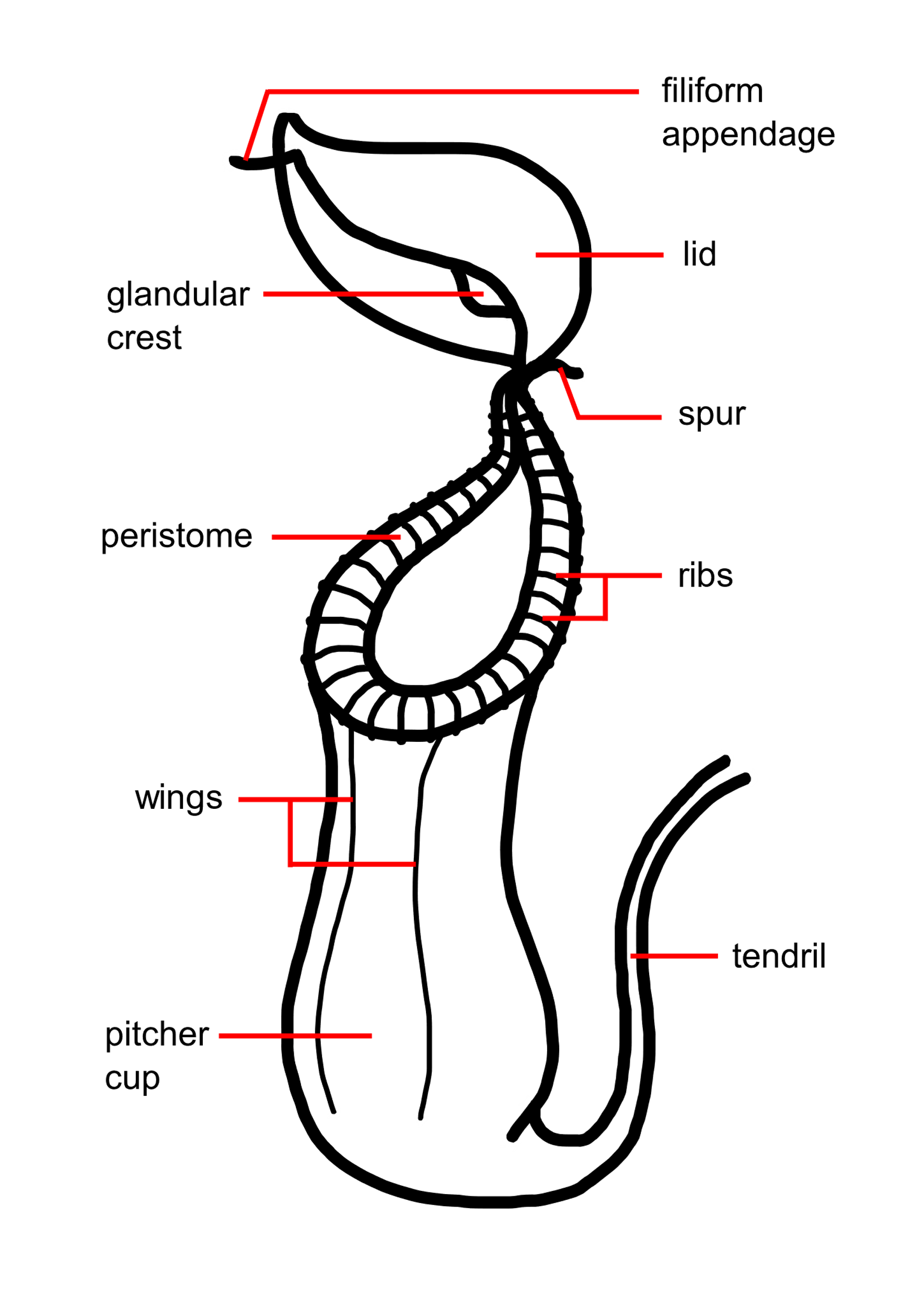
Explain the nutrition in pitcher plants with diagrams.
Answer
544.8k+ views
Hint: Pitcher plant has a partial heterotrophic mode of nutrition. To preserve its nitrogenous requirement, it nurtures insects as pitcher flowers grow in nitrogen-lacking soil.
Complete answer:
The most common term 'partially heterotrophic' is used for insectivorous plants. They have chlorophyll and are capable of carrying out photosynthesis however they depend on some of the vitamins (like nitrogen) on other organisms. The pitcher plant is observed as insectivorous. It grows and develops in nitrogen-deficient soil so derives its nitrogen from insects.
The leaf of the pitcher plant is changed to strengthen a pitcher-like shape. The brilliant coloration of the pitcher makes it very appealing to insects. Within the pitcher; there are numerous hair-like structures. These hairs lead the entrapped insects downwards The lid of the pitcher shuts down once an insect lies on the pitcher of the plant and the insect gets entrapped inside the pitcher.

After this, the insect then breaks down and is digested by means of the useful resource of enzymes produced and synthesised by the cells of the plants. The prey substances captured are then transformed into a mixture of nitrogenous compounds from which the plant gains its mineral nutrition, mainly nitrogen and phosphorus.
So, the answer to the above question is given to be the mode of nutrition in the pitcher plant is partially heterotrophic nutrition.
Note: While providing answer to the question always keep in mind that the pitcher plant grows in areas where the soil is lacking in minerals or excessively acidic for most of the plants
Complete answer:
The most common term 'partially heterotrophic' is used for insectivorous plants. They have chlorophyll and are capable of carrying out photosynthesis however they depend on some of the vitamins (like nitrogen) on other organisms. The pitcher plant is observed as insectivorous. It grows and develops in nitrogen-deficient soil so derives its nitrogen from insects.
The leaf of the pitcher plant is changed to strengthen a pitcher-like shape. The brilliant coloration of the pitcher makes it very appealing to insects. Within the pitcher; there are numerous hair-like structures. These hairs lead the entrapped insects downwards The lid of the pitcher shuts down once an insect lies on the pitcher of the plant and the insect gets entrapped inside the pitcher.

After this, the insect then breaks down and is digested by means of the useful resource of enzymes produced and synthesised by the cells of the plants. The prey substances captured are then transformed into a mixture of nitrogenous compounds from which the plant gains its mineral nutrition, mainly nitrogen and phosphorus.
So, the answer to the above question is given to be the mode of nutrition in the pitcher plant is partially heterotrophic nutrition.
Note: While providing answer to the question always keep in mind that the pitcher plant grows in areas where the soil is lacking in minerals or excessively acidic for most of the plants
Recently Updated Pages
Why are manures considered better than fertilizers class 11 biology CBSE

Find the coordinates of the midpoint of the line segment class 11 maths CBSE

Distinguish between static friction limiting friction class 11 physics CBSE

The Chairman of the constituent Assembly was A Jawaharlal class 11 social science CBSE

The first National Commission on Labour NCL submitted class 11 social science CBSE

Number of all subshell of n + l 7 is A 4 B 5 C 6 D class 11 chemistry CBSE

Trending doubts
Differentiate between an exothermic and an endothermic class 11 chemistry CBSE

10 examples of friction in our daily life

One Metric ton is equal to kg A 10000 B 1000 C 100 class 11 physics CBSE

Difference Between Prokaryotic Cells and Eukaryotic Cells

1 Quintal is equal to a 110 kg b 10 kg c 100kg d 1000 class 11 physics CBSE

State the laws of reflection of light




